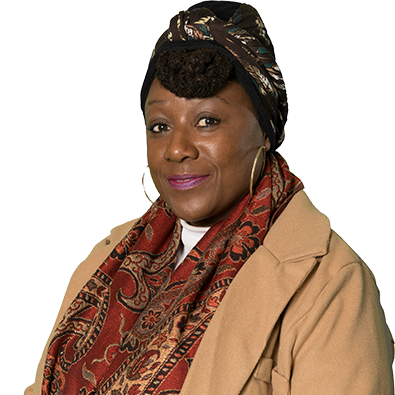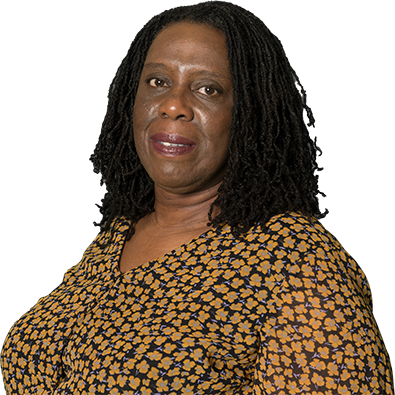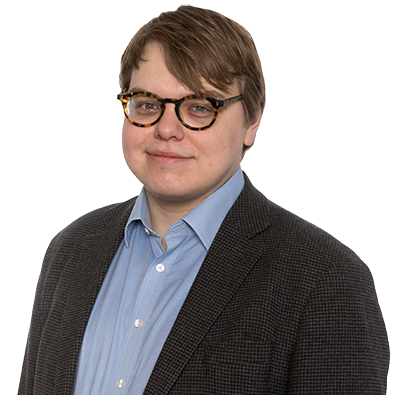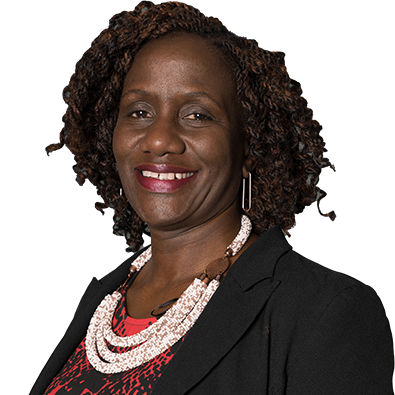Councillors
Addiscombe East Ward
Addiscombe as a place name is thought to be Anglo-Saxon in origin, meaning "Eadda or Æddi's estate".
Addiscombe West Ward
First mentioned in the 13th century, Addiscombe formed part of Croydon Manor, and was known as enclosed land belonging to Eadda.
Bensham Manor Ward
In 1086 the Domesday book lists ‘Croindone’ as having eight Parishes, one of which was named ‘Benchesham’.
History
Around 1086 part of the area we now call Thornton Heath was known as ‘Benchesham’, the first reference to it in recorded history occurred shortly after the Norman Conquest when the tithes were passed from the See of Canterbury at Croydon to Rochester. Some time after 1264 Benchesham was split into ‘Northborough’, now known as Norbury, and Suthbenchesham. In 1511, we find the first mention of a tract of 36 acres (15 ha) common land forming the southernmost part of Norbury and extended along the Sussex road to the Pond: “Thornton Heathe”.
In the seventeenth century Thornton Heathe was focused around what we now know as Thornton Heath Pond, between Norbury Manor House and Pond was an isolated farmhouse – this site is now where Thornton Heath Station stands. By the eighteenth century this farmhouse had become known as ‘Dick Turpin’s cottage’, as it was believed the famous highwayman stayed there with his aunt – the whole area was known for ‘coal and crime’.
During the late eighteenth century, modern South London began to take shape, as rows of housing swallowed up the villages of Kennington, Brixton, Streatham and Thornton Heath. Despite this boom, the roads in the area were poor – Parchmore and Green Lane were described as “a rural road impassable to vehicles” and the High Street was not tarmacked until the arrival of trams in 1900.
Between 1861 and 1911 housing development exploded, pushed forward by the London to Brighton Railway’s new route which repurposed the now drained Croydon Canal. Planned in 1851 Colliers Water Station, later known as Thornton Heath Station, was one of only two stops between Victoria and Croydon at the time it was built.
Within 10 years Thornton Heath area had overtaken the Pond as a residential development – fuelled by low cost ‘workman’s fares’ made possible by ‘The Cheap Trains Act 1883. By 1898 some of London’s earliest specialised commuter trains ran from Thornton Heath direct to Victoria. In 1900 the tram arrived and rapidly became the fastest and cheapest connection to Croydon.
Demographics
Bensham Manor has a population of about 16,201, the population is approximately 19% White British, 18% Black Caribbean, 13% Black African and 11% Indian, according to the 2011 census.
Bensham Manor was found to be the 21st most diverse ward in the United Kingdom by Simpson’s Diversity Index Score during the 2011 census.
Broad Green Ward
The area ‘Broad Green’ started out as a small triangular green and hamlet on the road between London and Croydon.
History
The area ‘Broad Green’ started out as a small triangular green and hamlet on the road between London and Croydon. The Half Moon coaching inn has been there since 1517, maybe even earlier. In the early nineteenth century the green was enclosed and houses built on it – some of these are still here today.
During the nineteenth century, large houses and villas were built along the road to the north and south of Broad Green, including Broad Green House, and parts of the road became known as ‘Millionaires Row’.
Between around 1860 and 1910, many of the current streets were laid out and terraced houses were built, gradually evolving into a high density suburb of Croydon. During the twentieth century several high rise blocks (offices as well as residential) and housing estates were built.
This locality was seriously affected by the riots of August 2011 and Royal Mansions were burned down. Croydon council has since been investing in improvements along London Road – between West Croydon and Croydon University Hospital – with the aid of funds from the Mayor of London and national government.
Demographics
Broad Green contains approximately 6,746 households with a population of about 18,172. This population is approximately 31 per cent white, 7 per cent mixed race, 34 per cent Asian or Asian British and 25 per cent black or black British, according to the 2011 census. A high proportion of the local population work in semi-skilled or unskilled manual jobs.
This area was found to be the 27th most diverse ward in the United Kingdom by Simpson’s Diversity Index Score during the 2011 census.
Croydon council rates Broad Green as the third most deprived ward in the borough, after New Addington and Fieldway.
Crystal Palace and Upper Norwood Ward
Historically known as Sydenham Hill, its modern name is derived from the Crystal Palace Exhibition building, which stood in the area from 1854 until it was destroyed by fire in 1936. Upper Norwood was home to the northern end of the Great North Wood, from which it takes its name.
History
Crystal Palace, or Sydenham Hill, as it used to be known prior to the arrival of The Crystal Palace in 1854, is one of the highest points in London at 367 feet (112 m) above sea level.
Sydenham Hill Wood is a nine-hectare nature reserve west of Sydenham Hill Road, along with Dulwich and Sydenham Hill Golf course. The hill was once covered by the Great North Wood which covered all of Sydenham, Norwood, Woodside, Gipsy Hill and from which Upper Norwood derives its name.
In the 19th century Sydenham Hill became a fashionable area, with large a number of large residential properties built along Sydenham Hill, and the areas its importance was further increased after The Crystal Palace was relocated from Hyde Park and re-erected on the south-western end of the ridge. Around this time the nearby residential area was renamed Crystal Palace after the landmark.
This newly renamed suburb included the Crystal Palace Park that surrounds the site of the Palace, and provided a home for Crystal Palace National Sports Centre, which had previously been a football stadium that hosted the FA Cup Final between 1895 and 1914. Crystal Palace F.C. were founded at this site in 1905 and played at the Cup Final venue in their early years. The park still contains Benjamin Waterhouse Hawkins’s Crystal Palace Dinosaurs which date back to 1854.
In 1863 Chatham Main Line bought the railway to Sydenham Hill, with a further line arriving in 1884, this time to serve the Crystal Palace directly. The line had a new station at Upper Sydenham on the southern edge of the ridge, with direct trains to London Victoria via Peckham Rye. However, the line was poorly used, and the destruction of the Crystal Palace made the situation worse, despite the rapid growth of the area. The Chatham Main Line station closed in 1954 leaving an abandoned tunnel within the Sydenham Hill Woods.
On 30 November 1936 a small fire, which started in a cloakroom, engulfed The Crystal Palace. 89 fire engines and over 400 firemen attended the blaze, but high winds and the large amount of flammable material in the building thwarted their best efforts. A crowd of around 100,000 gathered to watch the fire, including Winston Churchill, who declared it “…the end of an age”, although this could also be seen as a commentary on the abdication crisis which was reaching its nadir around that time.
The South Tower and much of the lower level of the Palace had been used for tests by television pioneer John Logie Baird for his mechanical television experiments, and much of his work was destroyed in the fire. The Crystal Palace grounds were also used as a manufacturing base for aircraft radar screens and other hi-tech equipment of the time, although this remained a secret until well after the war. This association with technology led to the construction of the Crystal Palace transmitting station in the 1950s.
Fairfield Ward
Croydon was known as a town for fairs, amongst the most famous was "Fair Field", which was held on the site now occupied by Fairfield Hall.
New Addington North Ward
In 1935, the First National Housing Trust purchased 569 acres (2.3 km²) of Fisher's Farm with the intention of erecting a 'Garden Village', with 4,400 houses, shops, two churches, cinema, and village green.
Norbury Park Ward
The name Norbury derives from North Burh, (North Borough), being the northern part of the historic borough of Benchesham.
History
Around 1086 part of the area we now call Thornton Heath was known as ‘Benchesham’, the first reference to it in recorded history occurred shortly after the Norman Conquest when the tithes were passed from the See of Canterbury at Croydon to Rochester. Some time after 1264 Benchesham was split into ‘Northborough’, now known as Norbury, and Suthbenchesham.
Modern Norbury Park contains several remnants of Croydon’s ancient history – parts of the Great North Wood, a natural oak forest that covered four miles of South London and from which Norwood takes its name, Norbury Manor House, and it’s estate Norbury Park.
The Manor and park appear in the Domesday Book of 1086 and the park contains some of the oldest trees in the United Kingdom, allegedly used in Druidic ceremonies. Local archaeologists have found evidence of Bronze age occupation at the site, it is now It is part of the Mole Gap to Reigate Escarpment Special Area of Conservation and Site of Special Scientific Interest.
Norbury & Pollards Hill Ward
Norbury was a sub-manor within the manor of Croydon. In 1269 the Manor comprised 91 acres of arable land in Pollard’s Hill, 30 acres in Grandon, 55 acres of pasture, 36 acres of heathland, 2 acres of woodland and 17 acres of meadow land.
History
Norbury and Pollards Hill is one of the oldest parts of Croydon, local archaeology shows several local roads take the courses of trackways used by Anglo-Saxon farmers more than two thousand years ago. The A23 London Road through the area was built over the route of the original ‘London to Portslade Way’ Roman Road from that was constructed during the 1st Century A.D.
The first written reference to Norbury appears in 1229. From 1337 until 1856 the ‘Carew’ family were lords of the manor of Norbury and owned most of the land apart from a 17 year period from 1539 when Nicholas Carew fell out of favour with king Henry Vlll. He was accused of treason, and he was beheaded at the Tower of London.
The last manor house of Norbury was Norbury Hall which was built in 1802. The manor house was situated on a large estate where Craignish Avenue is today and it’s garden contained a lake and a cricket ground. Norbury Hall still exists today as a residential home although much of the garden was sold off in the 1950s and it became a public park.
The first developments of modern Norbury arrived in the 1860s in the shape of Victorian Villas along the London Road. The railway station, designed to serve the Streatham Races, appeared about ten years later and the North Surrey Golf Club arrived in 1894.
By 1900 Norbury was an affluent semi-rural suburb boasting two golf courses and cricket, football, tennis and bowls clubs. The earliest parades of shops appeared around this time, and the electric tram followed in 1901. The tram made Norbury an important interchange between London and Croydon which further developed the area as a shopping precinct and leisure venue.
During the second half of the twentieth century, many of the large Victorian villas were demolished and office blocks were built on their sites. Later many of the office blocks were themselves converted into residential flats. Following the housing shortages created by World War 2, development of Pollards Hill began in earnest, the earliest ‘Arcon’ prefabricated bungalows appearing in 1946 and remained a significant feature of the area until well into the 1960s.
Demographics
Norbury and Pollards Hill contains approximately 6,055 households with a population of about 16,476. The 2011 census showed that White British was the largest ethnic group at 24% of the population, followed by 13% Black Caribbean, 12% Indian and 12% Other White.
Selhurst Ward
Horse racing in Croydon began in Selhurst around 1858. Selhurst Farm’s tenant farmer hosted races before they moved elsewhere in Croydon, this site eventually became Selhurst Park stadium.
History
Wider Norwood covers a vast area between (and sometimes including parts of) Streatham, Dulwich, Penge and Croydon. It’s name means the north [of Croydon] wood – reffering to The Great North Wood. Just as today, Norwood was not a single ancient parish and so has no historic nucleus.
Much of what went to make up Norwood was common land, and development was accelerated by the enclosures of these commons in the late 18th and early 19th century. The character of later developments was largely fashioned by the Ecclesiastical Commissioners decisions as to the size of the plots; large plots resulted in large houses and small plots in small houses. The major freeholders were the Archbishop of Canterbury (Lord of the Manor of Lambeth and Croydon), whose land was later managed by the Ecclesiastical Commissioners, and Lord Thurlow, who owned land to the west of Dulwich.
Early development took place in the 19th century. The new population was one of wealthy City commuters, who had the time and money for a long daily journey. Examples of houses they occupied were those in the large plots on the south side of Beulah Hill on land sold by the Ecclesiastical Commissioners. Other developments took place on Lord Thurlow’s lands to the south of Tulse Hill after his death and the break up of his estate by his executors. Wealthy City commuters were a finite market and later attempts to build to their taste and scale on land adjacent to Beulah Spa failed.
Norwood declined after 1890 and many of the largest houses went into institutional use or, more recently, were demolished and replaced by flats.
Demographics
South Norwood has a population of about 16,518 people in 7,724 households. The population is approximately 40.3% White British, 10.1% Asian British, 38.5% Black/African/Caribbean/Black British, and 9.3% Mixed/multiple ethnic groups according to the 2011 census.
South Norwood Ward
South Norwood takes its name from the Great North Wood, a natural oak forest that covered four miles of South London.
History
Wider Norwood covers a vast area between (and sometimes including parts of) Streatham, Dulwich, Penge and Croydon. It’s name means the north [of Croydon] wood – reffering to The Great North Wood. Just as today, Norwood was not a single ancient parish and so has no historic nucleus.
Much of what went to make up Norwood was common land, and development was accelerated by the enclosures of these commons in the late 18th and early 19th century. The character of later developments was largely fashioned by the Ecclesiastical Commissioners decisions as to the size of the plots; large plots resulted in large houses and small plots in small houses. The major freeholders were the Archbishop of Canterbury (Lord of the Manor of Lambeth and Croydon), whose land was later managed by the Ecclesiastical Commissioners, and Lord Thurlow, who owned land to the west of Dulwich.
Early development took place in the 19th century. The new population was one of wealthy City commuters, who had the time and money for a long daily journey. Examples of houses they occupied were those in the large plots on the south side of Beulah Hill on land sold by the Ecclesiastical Commissioners. Other developments took place on Lord Thurlow’s lands to the south of Tulse Hill after his death and the break up of his estate by his executors. Wealthy City commuters were a finite market and later attempts to build to their taste and scale on land adjacent to Beulah Spa failed.
Norwood declined after 1890 and many of the largest houses went into institutional use or, more recently, were demolished and replaced by flats.
Demographics
South Norwood has a population of about 16,518 people in 7,724 households. The population is approximately 40.3% White British, 10.1% Asian British, 38.5% Black/African/Caribbean/Black British, and 9.3% Mixed/multiple ethnic groups according to the 2011 census.
Thornton Heath Ward
In 1511, we find the first mention of a tract of 36 acres (15 ha) common land forming the southernmost part of Norbury and extended along the Sussex road to the Pond: “Thornton Heathe”.
History
Around 1086 part of the area we now call Thornton Heath was known as ‘Benchesham’, the first reference to it in recorded history occurred shortly after the Norman Conquest when the tithes were passed from the See of Canterbury at Croydon to Rochester. Some time after 1264 Benchesham was split into ‘Northborough’, now known as Norbury, and Suthbenchesham. In 1511, we find the first mention of a tract of 36 acres (15 ha) common land forming the southernmost part of Norbury and extended along the Sussex road to the Pond: “Thornton Heathe”.
In the seventeenth century Thornton Heathe was focused around what we now know as Thornton Heath Pond, between Norbury Manor House and Pond was an isolated farmhouse – this site is now where Thornton Heath Station stands. By the eighteenth century this farmhouse had become known as ‘Dick Turpin’s cottage’, as it was believed the famous highwayman stayed there with his aunt – the whole area was known for ‘coal and crime’.
During the late eighteenth century, modern South London began to take shape, as rows of housing swallowed up the villages of Kennington, Brixton, Streatham and Thornton Heath. Despite this boom, the roads in the area were poor – Parchmore and Green Lane were described as “a rural road impassable to vehicles” and the High Street was not tarmacked until the arrival of trams in 1900.
Between 1861 and 1911 housing development exploded, pushed forward by the London to Brighton Railway’s new route which repurposed the now drained Croydon Canal. Planned in 1851 Colliers Water Station, later known as Thornton Heath Station, was one of only two stops between Victoria and Croydon at the time it was built.
Within 10 years Thornton Heath area had overtaken the Pond as a residential development – fuelled by low cost ‘workman’s fares’ made possible by ‘The Cheap Trains Act 1883. By 1898 some of London’s earliest specialised commuter trains ran from Thornton Heath direct to Victoria. In 1900 the tram arrived and rapidly became the fastest and cheapest connection to Croydon.
Demographics
South Norwood has a population of about 16,518 people in 7,724 households. The population is approximately 40.3% White British, 10.1% Asian British, 38.5% Black/African/Caribbean/Black British, and 9.3% Mixed/multiple ethnic groups according to the 2011 census.
Waddon Ward
Waddon's name was first recorded in the twelfth century and derives from Old English words meaning 'the hill where woad grows, or is grown'.
History
Waddon’s name was first recorded in the twelfth century and derives from Old English meaning ‘the hill where woad grows, or is grown’. Evidence of Bronze Age and Iron Age settlements have been found in the area. Waddon has an older area with 19th-century properties, some even older, close to central Croydon. Further south is a large estate of Council-owned and former Council-owned homes and a small number of tower blocks. In the inter-war years Waddon had the most Croydon Corporation owned homes in Croydon with 1,125 council houses and 80 council flats.
Waddon has a long history of industrial trades. The Croydon gasworks were built on Waddon Marsh in 1867. An electricity generating station opened in 1896. The opening of the Purley Way in 1925 prompted the building of a number of factories including for Redwing Aircraft Ltd., Trojan Ltd. (car manufacturers), Tizer Ltd, Standard Steel Co., Croydon Foundry Ltd. (1920), Metal Propellers Ltd., (1925) and Southern Foundries Ltd. (1926). Croydon Corporation built the Waddon pumping station in 1910–11 on the road now called Waddon Way.
A second power station – Croydon B – opened in 1950 eliminating the first of the watercress beds. First commissioned in 1947 and built by Croydon Corporation the power station was nationalised by the then Labour government.
The former Croydon Airport is in south-west Waddon. The aerodrome was established in December 1915 for the defence of London. Land to the east of Plough Lane was requisitioned for testing by the National Aircraft Factory No.1 and was known as Waddon Aerodrome. In 1920 the Beddington and Waddon aerodromes became the main customs airport for London.
The international distress term “Mayday” was invented at Waddon’s Croydon Airport. It was Croydon Airport senior radio officer Frederick Stanley Mockford (1897 – 1 March 1962) who was the originator of the uniform international distress signal.
The local community consequently suffered badly in the Blitz. An attack on 15 August 1940 marked the first civilian bombing with 62 civilian fatalities and 185 injured outside the airport. In addition two civilian telephone operators were injured.
West Thornton Ward
Thornton Heath Pond was the historic centre of ‘Thornton Heathe’, which was known for its highwaymen and lawlessness in the 18th century. A plot of land adjacent to the pond became known as ‘Hangman’s Acre’, home to the area’s Gallows until the 19th Century.
History
Around 1086 part of the area we now call Thornton Heath was known as ‘Benchesham’, the first reference to it in recorded history occurred shortly after the Norman Conquest when the tithes were passed from the See of Canterbury at Croydon to Rochester. Some time after 1264 Benchesham was split into ‘Northborough’, now known as Norbury, and Suthbenchesham. In 1511, we find the first mention of a tract of 36 acres (15 ha) common land forming the southernmost part of Norbury and extended along the Sussex road to the Pond: “Thornton Heathe”.
In the seventeenth century Thornton Heathe was focused around what we now know as Thornton Heath Pond, between Norbury Manor House and Pond was an isolated farmhouse – this site is now where Thornton Heath Station stands. By the eighteenth century this farmhouse had become known as ‘Dick Turpin’s cottage’, as it was believed the famous highwayman stayed there with his aunt – the whole area was known for ‘coal and crime’.
During the late eighteenth century, modern South London began to take shape, as rows of housing swallowed up the villages of Kennington, Brixton, Streatham and Thornton Heath. Despite this boom, the roads in the area were poor – Parchmore and Green Lane were described as “a rural road impassable to vehicles” and the High Street was not tarmacked until the arrival of trams in 1900.
Between 1861 and 1911 housing development exploded, pushed forward by the London to Brighton Railway’s new route which repurposed the now drained Croydon Canal. Planned in 1851 Colliers Water Station, later known as Thornton Heath Station, was one of only two stops between Victoria and Croydon at the time it was built.
Within 10 years Thornton Heath area had overtaken the Pond as a residential development – fuelled by low cost ‘workman’s fares’ made possible by ‘The Cheap Trains Act 1883. By 1898 some of London’s earliest specialised commuter trains ran from Thornton Heath direct to Victoria. In 1900 the tram arrived and rapidly became the fastest and cheapest connection to Croydon.
Demographics
West Thornton has a population of about 17,489 people in 6,108 households. The population is approximately 23.5% White, 37% Asian British, 30.4% Black/African/Caribbean/Black British, and 6.5% Mixed/multiple ethnic groups, according to the 2011 census.
Monthly Surgeries
First Wednesday of the month 6:30 – 7:30pm at the VHP Centre, 10 Thornton Row, Thornton Heath, CR7 6JN.
Third Saturday of the month 11 – 12pm 908 London Road, Thornton Heath CR7 7PE.
No surgeries take place in August or December.
Woodside Ward
Woodside was first mentioned in 1332, and is thought to signify its location adjacent to the Great North Wood.
©2024 Copyright Croydon Labour Group

































